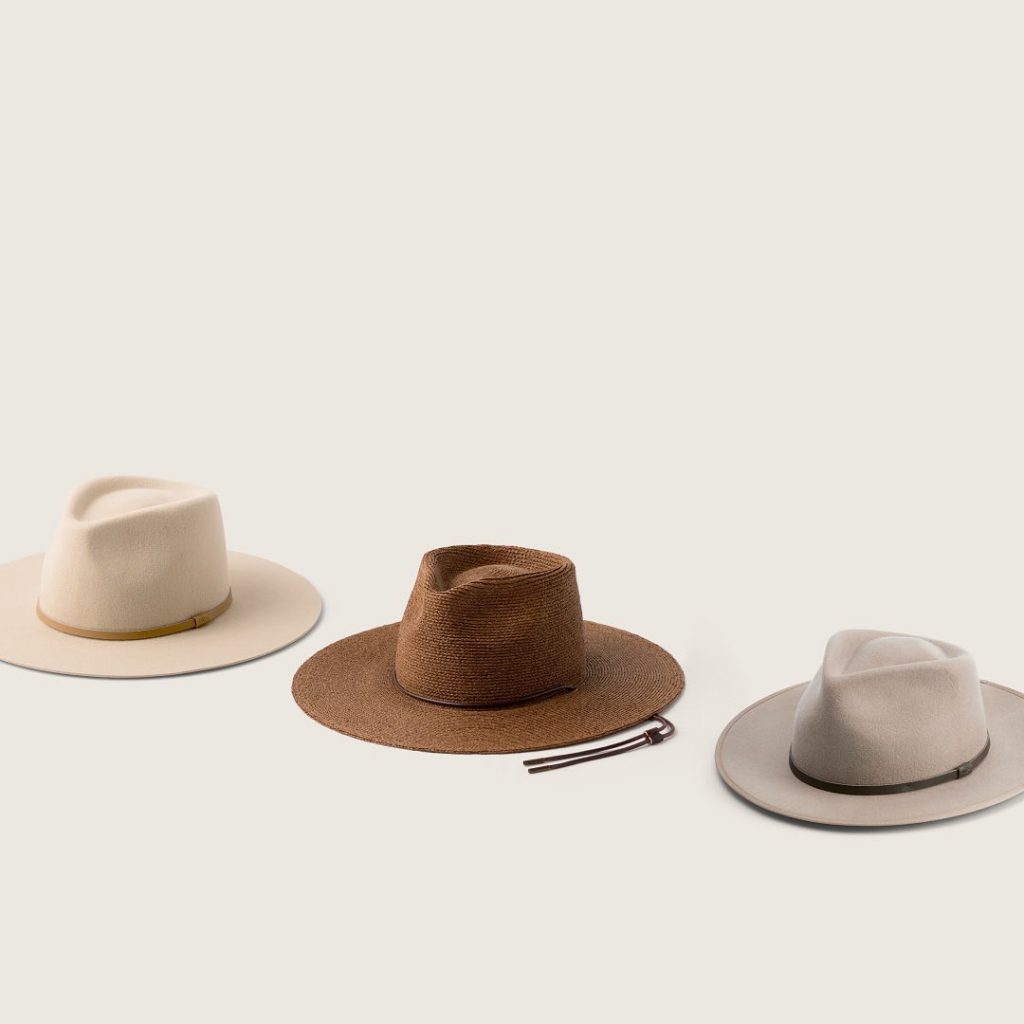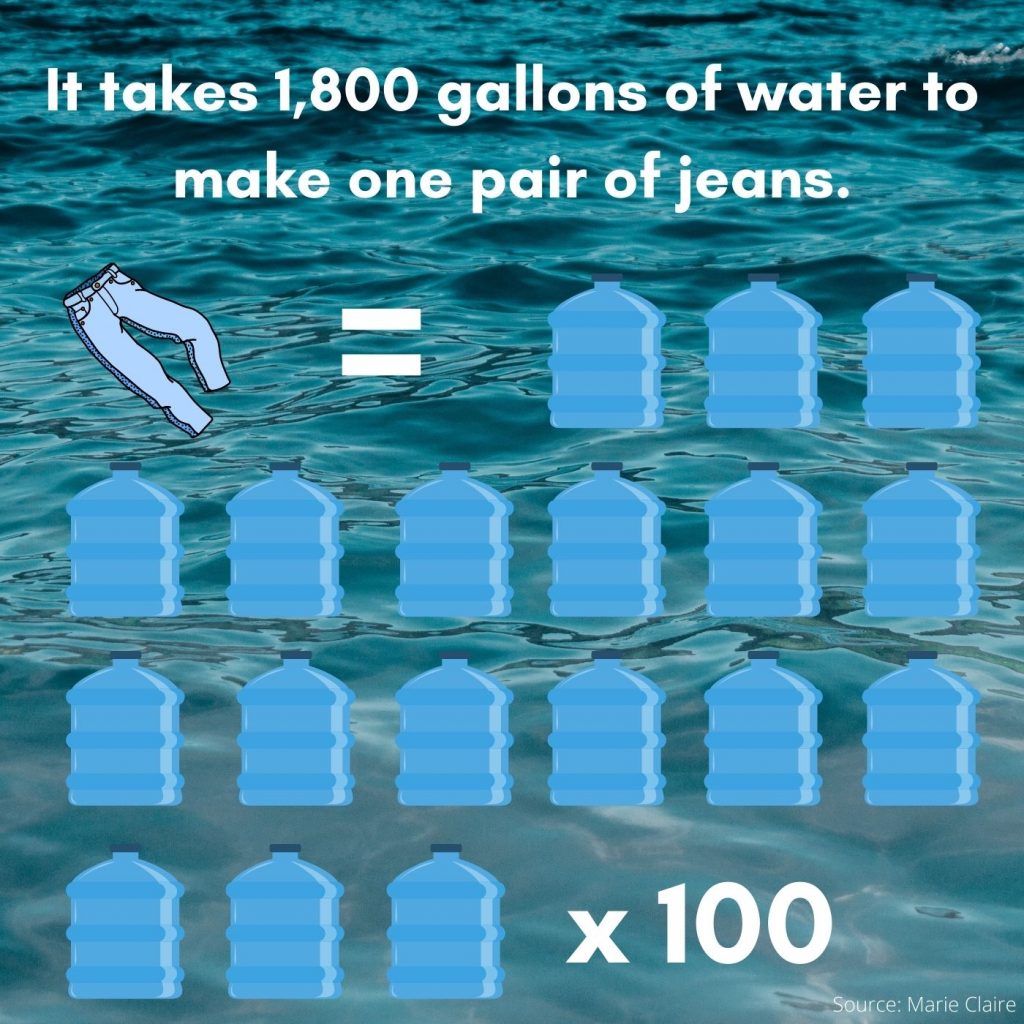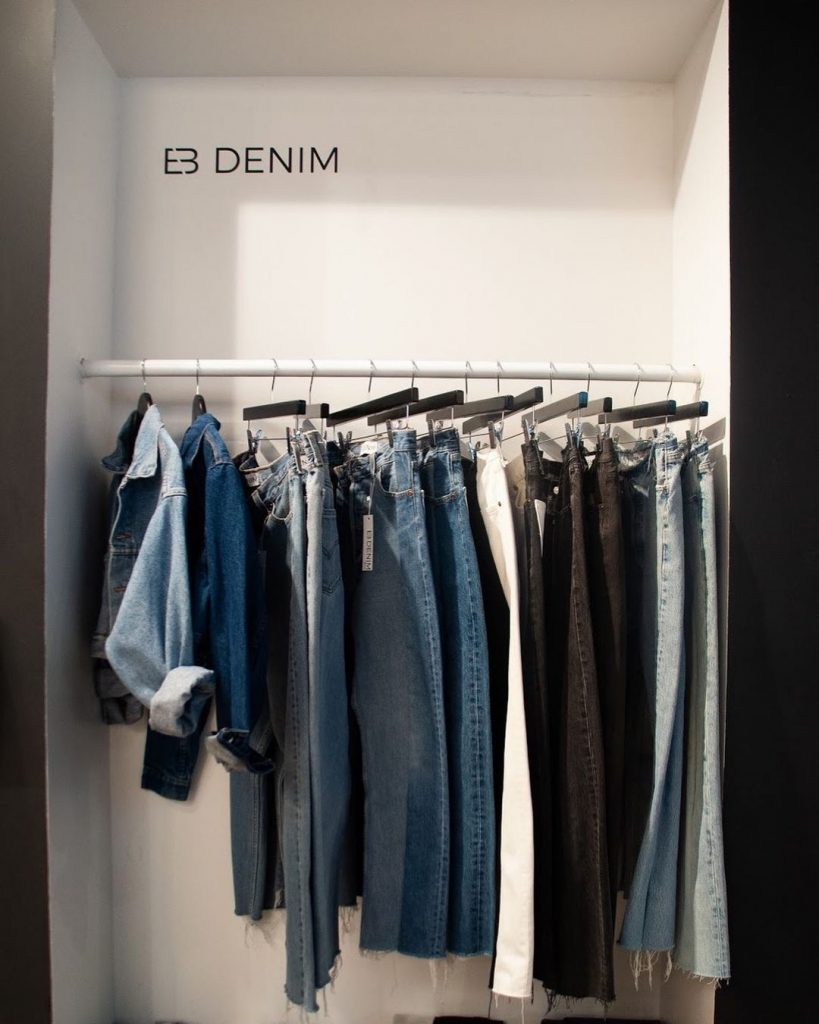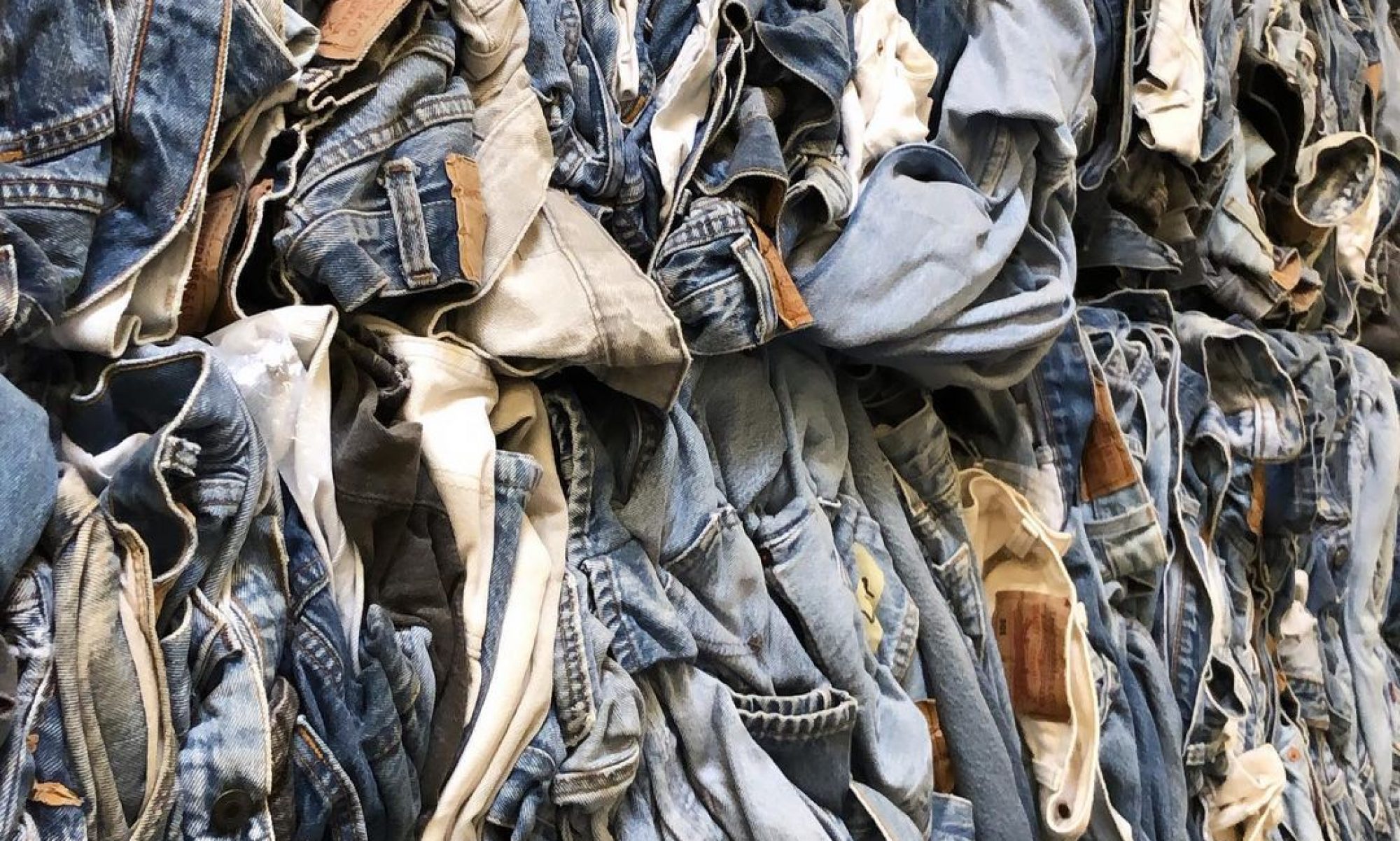It’s no longer a question anymore of whether the future of fashion is sustainable. Instead, scientists now pose the question of whether it’s too late to correct the industry’s massive consumption of resources and its penchant to pollute.
When scientists announced last year that we are just years away from being unable to reverse the effects of global warming, they discussed several solutions to help mitigate and adapt to the disaster. There was a clear focus by scientists on transportation, agriculture, electricity and the like. Yet one specific industry was noticeably missing: fashion.
Fashion “was responsible for some 2.1 billion metric tons of greenhouse-gas (GHG) emissions in 2018, about 4 percent of the global total,” according to worldwide management consulting firm McKinsey’s research.
McKinsey calculates that the industry would have to cut down its greenhouse gas emissions to 1.1 billion metric tons of CO2 equivalent by 2030 to meet the ideal guidelines set out by the Intergovernmental Panel on Climate Change (IPCC), but their research shows the industry “is set to overshoot its target by almost twofold, with emissions of 2.1 billion metric tons of CO2 equivalent in 2030, unless it adopts additional abatement actions.”
With fast fashion as one of the most popular options for buyers, these companies are some of the ones most detrimentally affecting the environment. Fast fashion is defined by its name: it is clothing that is mass produced very quickly, almost always imitating runway and high-end looks at a much lower cost. But note: the cost is low to the purchaser, but the cost is very high to the environment and the planet. Brands like Shein or Missguided are go-to shops for people around the world, but these brands’ environmental practices are a big part of why the fashion industry contributes so greatly to global warming. While the access to high fashion at low costs seems ideal, the environmental effects are not. Because clothing is being created so quickly, they deplete non-renewable sources, emit greenhouse gases and use tremendous amounts of water and energy. Another byproduct of fast fashion is untreated toxic wastewater that contains substances such as lead, mercury and arsenic that harms aquatic and human life.
A slow but steady progress
All of this is not to say that no one is doing anything. Consumers are now putting pressure on all brands, from high-end labels to fast fashion, to adopt more environmentally friendly practices, and some brands have made that commitment. From big conglomerates to luxury labels to small businesses, the conversation around sustainability in fashion is at an all-time high. But without change among the entire industry, the data shows that it simply will not be enough.
Up-and-coming Australian hat brand Will & Bear is dedicated to giving back to nature, with a mission of “From the earth, for the earth. Our goal is to reduce our impact through thoughtful design, give back to our planet and create a culture that cares about nature, to inspire all to preserve it,” states the company website.
“Will & Bear is driven by innovation and sustainable production processes,” co-founders Lauren Williams and Alex Knorr said jointly in an email interview. “Each hat is ethically produced using sustainable methods where possible between Sri Lanka, Mongolia and China. For each hat sold, we plant 10 trees and more than 1,000,000 trees have been planted across West Africa since 2016.”

But committing to giving back to the environment is not enough for the founders — and research shows it will not be enough to create enduring change.
“We’re always experimenting with new materials from upcycled waste to minimize our carbon footprint while reducing the label’s reliance on new fibers,” Williams and Knorr added. “With that being said, you can expect to see some new styles in the near future! After an unprecedented year (that really put the spotlight on supply chain fragility), we hope that new sustainability initiatives are put into place and adhered to moving forward.”
“We’re always experimenting with new materials from upcycled waste to minimize our carbon footprint while reducing the label’s reliance on new fibers.”
Lauren Williams & Alex Knorr, Founders of Will & Bear
By moving away from new materials, whether it is fiber for clothing or plastic for shipping, it creates an opportunity for recycled materials to become the norm. In doing so, it creates demand for the recycled materials rather than the new ones, and it can create a circular model that is much less wasteful. But that does not mean that there will not be any waste at all.
“While creating waste is nearly inevitable, we think it’s important for every brand to minimize their carbon footprints and upcycle/recycle as much as possible,” Williams and Knorr continued.
Will & Bear is not the only brand looking into new product options for clothing. Luxury brands Hermès and Stella McCartney recently announced that they are using mushroom-based “leather” to create some of their products. The mushroom-based “leather” is made of mycelium, which makes up the root of the mushroom, to create a leather-like material that is not only more sustainable, but also animal-friendly. Mycelium is reportedly an infinitely renewable source and has fewer environmental impacts than even other leather alternatives. According to the Stella McCartney website, because it is not petroleum-based (whereas most current synthetic options are), more fossil fuels can be kept in the ground and less plastic will be deposited into landfills and oceans. Gabriela Hearst is also synonymous with sustainability in the fashion industry. Recently, her Spring/Summer 2021 collection was presented via a carbon neutral runway show, and the brand has set a goal of eliminating the use of virgin materials by 2022. Hearst, who was recently appointed as the Creative Director of Chloé, will likely be implementing some similar sustainability standards in this new position as well. Chloé is establishing a sustainability board to focus on both environmental and social sustainability. According to Women’s Wear Daily, the brand recently appointed Nobel Prize nominee Amanda Nguyen to the board in its latest step toward sustainability.
Innovation in the industry
“The fashion industry has a detrimental impact on the environment, and it’s the second largest polluter in the world, just after the oil industry. That being said, there are so many things consumers and businesses alike can do to offset this, and we feel strongly that that’s our mission as a company,” Williams and Knorr added.
The fashion industry, while certainly impacting the environment, is also constantly innovating and adapting. Mushroom “leather” is just one place where it is changing. Another trend in fashion right now is recycling and upcycling. By upcycling vintage and pre-loved fabric, fabric gets a second chance. Plus, it saves the environment by creating less waste and fewer emissions.
According to Marie Claire, it takes about 1,800 gallons of water to create a single pair of jeans (for context, 1,800 gallons of water is more than 100 showers). While the fashion industry has a tremendous carbon footprint, it also has a big water problem, with denim especially. So, finding a way to upcycle denim to avoid making new denim needs to be the future of fashion, and that is exactly what vintage premium denim brand EB Denim is doing.

Founder Elena Bonvicini started the company in high school, originally thrifting denim and upcycling the fabric to make new designs. Today, she uses Levi’s 501s to create jeans that have been worn by influencers like Kylie Jenner, Hailey Bieber, Gigi Hadid and Chiara Ferragni. Recycling and upcycling have become two buzzwords in the industry. Recycling often involves turning a product into something new that is of equal or lesser quality, upcycling is a type of recycling that turns what would be waste into a product of higher quality, which is what Bonvicini is currently focused on. As she continues to grow the brand, sustainability is at the core of the brand’s mission. Her goal is to set the standard for sustainability across the industry. Right now, California-based Bonvicini sources her denim in Los Angeles, which allows her to be involved in the process.
“We have a few different vintage suppliers based in L.A. And basically what we do is we go through all of the vintage that they have in stock, and this is like thousands at a time, honestly. And they also have vintage silk scarves and vintage sweatshirts,” Bonvicini said. “We’ll take all those pieces and rework them into new garments, and we have several local manufacturers that do it so it’s all locally done. All the vintage is sourced in L.A.”
When she noticed a huge surplus of oversized men’s denim but a finite supply of women’s jeans, she started redesigning the men’s denim into women’s pants and shorts.
“When we make a pair of shorts, we take the pant legs and convert it into a brand new product. So there’s absolutely minimal waste when we upcycle,” Bonvicini said.
Bonvicini is also committed to paying workers a fair, living wage. By using local and small businesses, she is able to see the ins and outs of the process and work directly with everyone working on the product. By doing this, she can ensure that everyone who touches the product is being paid fairly.
“I’m pretty much face-to-face with everyone who’s touched the garment,” she said. “We do everything locally and just make sure all of our contractors are paying our employees fairly as well.”
Fashion’s sustainable future
While EB Denim is currently sourcing denim and other fabrics from local vendors, the brand is also working with Simply Suzette and its founder Ani Wells, a sustainable denim specialist, to start creating its own denim.
“We’re making sure that we’re using 100% natural fibers and they’re 100% verified, so we can trace them back and we know that they’re ethically sourced and produced. And we’re using distilled indigo, which is a liquid form of dye, instead of a powder form, which saves water energy and chemicals,” Bonvicini said. “[We think about] every detail, even to how we wash it… The way that we’re doing that now is an ozone wash. They barely use any water.”

While some customers care deeply about a brand’s sustainability platform, there are still a lot of people who do not care, or even know, about fashion’s effect on the environment. But one thing is for sure: vintage and upcycled clothing is one of fashion’s hottest trends right now. Is this because people want to shop responsibly, or do they just like the look of the clothes?
“Honestly, I can’t tell,” Bonvicini said. “I think that a lot of it has to do with just the look of it and the appreciation of something being vintage and having a history and a life. I can’t necessarily say that customers care too much about sustainability, but I do.”
But Bonvicini is willing to take on the responsibility of making sustainable clothing regardless.
“I don’t care if my customers don’t care about sustainability. It’s my responsibility to make sure that the jeans are sustainable, and then that’s just a plus to the customers. It’s always going to be about the look and the feel and the appearance of the jeans, but then sustainability, is a plus to it. But as far as upcycling, I think it honestly might have to do a little bit more with the look of it.”
“I don’t care if my customers don’t care about sustainability. It’s my responsibility to make sure that the jeans are sustainable, and then that’s just a plus to the customers.”
Elena Bonvicini, Founder of EB Denim
Bonvicini believes that there will be regulations in the future to hold brands accountable to sustainability standards. And she is not the only one either. Across both fashion and beauty brands, industry leaders agree that there will be regulations that brands will be held to, whether it is a brand’s carbon footprint or eliminating single-use plastic in packaging. But the real question is when will this happen? And will it be too little, too late?
While many brands, including H&M and Patagonia, offer recycling programs, recycling clothes is not enough, Bonvicini says.
Patagonia has long been committed to the environment. Aside from Worn Wear, its recycling program, the brand also imposes a 1% tax on itself, which is used to provide “support to environmental nonprofits working to defend our air, land and water around the globe,” according to the Patagonia website.
Patagonia has also built robust environmental and animal welfare responsibility programs. The programs guide how the brand makes its materials and products. With 64 percent of fabrics made with recycled materials and 100 percent of virgin down certified to the Advanced Global Traceable Down Standard, the brand is committed to transparency and the environment. But it is not just environmentally responsible; it is also socially responsible. Its Social Responsibility Programs are at the crux of the brand, and Patagonia has joined programs like Living Wage and Fair Trade to ensure the brand is committed to its workers. Like EB Denim, Patagonia uses indigo to dye denim. “We are exploring opportunities to work with partners in the supply chain to grow non-synthetic organic indigo,” Patagonia’s website read. “Eventually, our goal is for this crop to become Regenerative Organic Certified™. We also continue to investigate alternatives for indigo, both natural and synthetic, that have less of an ecological footprint.”
While some brands are ensuring that they are giving back to the environment and producing pieces under humane working conditions, not all of fashion is ready to pay up. It is expensive to commit to this change, and Bonvicini and others hope that the future of fashion will be a world in which the sustainable option is the norm and not the more expensive route. In the meantime, the world will just have to keep relying on brands like EB Denim, Will & Bear and Patagonia, along with consumers, to set the standard for sustainability and hold the fashion industry accountable.
